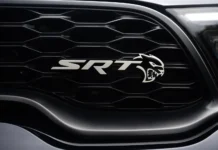
The EV automaker’s entire range will rely on the camera-based “Tesla Vision” system from here on out.
Following in the wake of its decision to remove radar sensors from the Model 3 and Model Y, Tesla is now making the same move with the larger Model S and Model X. As of this moment, all Tesla vehicles will no longer come equipped with radar, and will instead utilize a fully camera-based system.
On the company’s website documenting the move to Tesla Vision, it noted that Model S and Model X models built after mid-February 2022 would have the feature. All of the units in both model lineups built prior to that would still use radar. Tesla goes on to announce that, during a “short period”, it would limit Autosteer to a maximum speed of mph. Beyond that, the cars’ adaptive cruise control systems will require a minimum following distance. In time, an over-the-air update should restore its full capability.
At the moment, Tesla’s camera system has not been put through the NHTSA’s paces to rate forward collision warning and automated emergency braking. The company says, “We expect those ratings will be restored through confirmatory testing in the coming weeks.”
Elon Musk: Neural nets and cameras are “the only way” to self-driving
Tesla’s CEO has long spoken in this direction, particularly on Twitter. More or less, he posits that (true) self-driving cars should see and interpret the way humans do. “The road system was designed to work with biological neural nets & eyes,” he says, “so a general solution to self-driving necessarily will require silicon neural nets & cameras.”
The February 25 tweet mirrors the comments he made (in response to the same account) back in October 2021:
That said, the transition may not be entirely without setbacks. Tesla, for its part, came under scrutiny from the National Highway Traffic Safety Administration (NHTSA) over a “phantom braking” issue in its Tesla Vision-equipped Model 3 and Model Y vehicles. The administration received hundreds of complaints on the matter, and issues may affect some 400,000 cars.
However, as Car & Driver points out, the automaker is by no means the only one with such issues. The NHTSA is also investigating 1.7 million Honda vehicles for similar random braking occurrences, and the affected cars have radar as well as camera systems onboard.

As ever, it’s worth pointing out that no system currently on the market, no matter how effective, can drive itself completely without human intervention. While Tesla will undoubtedly continue to improve its systems with over-the-air updates and physical changes (like better cameras) over time, its important to understand the limitations of any semi-autonomous system and stay focused on the task at hand when behind the wheel.

























